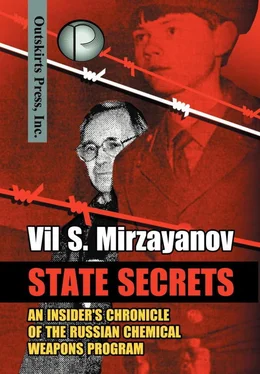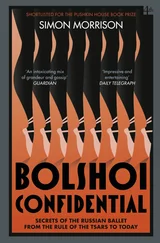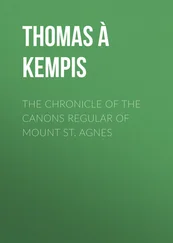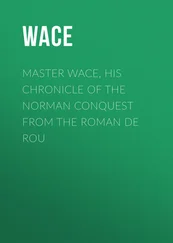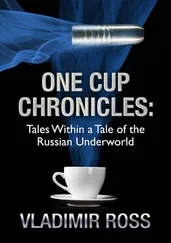For some reason, my youthful enthusiasm often tripped me up at crucial moments in my life, and it nearly nipped my scientific career in the bud. Since I had spent long hours in the library with the scientific literature, I also had the time to study the works of Sokolov. In fact, there were quite a lot of them. He had written more than ten books and other publications.
Nevertheless, the more I read, the deeper my feeling of “Deja vu” became. I had already seen it all before somewhere else. Finally, in R.M. Barrer’s book “Diffusion in and Through Solids ” (Cambridge University Press, 1951, in Russian trans.) I found whole pages, with notes from Sokolov, asking his typist to copy out sections without any changes. Sometimes, the professor wrote “let us suppose” above “let us assume” of the original text, or “thus” above the word “consequently”. Then instructions followed to copy “from” and “up to”, so that they could copy from another book without acknowledging the original author. This was the story behind each of my supervisor’s books.
I was shocked and miserable about my discovery, because I knew that I wouldn’t be able to keep quiet, when the facts cried out scandalous plagiarism. This was certain to disrupt my “peaceful” life. I shared my discovery only with a few people, who strongly recommended that I remain completely silent, “so as not to ruin my life”.
Instead, I went to the editorial office of newspaper Izvestia with copies of my “discoveries”. At that time they published critical articles about this kind of thing. After a long wait in the reception area, the editor on duty asked me in. He listened to me, laughed, and explained that these kinds of cases were so numerous that if they published them all, the newspaper would turn into a chronicle of plagiarism in science.
At the same time, the editor promised to send my papers to the plagiarist’s workplace, so that measures could be taken “on the spot”, as he put it.
Some measures were “taken” – an extended attack against me got underway. Sokolov’s friends, who were famous scientists, came to the institute to have “talks” with me. Some tried to persuade me, while others threatened me directly, saying that my career in science would be over if I didn’t withdraw my petition.
Once I was summoned by the academic secretary of the institute, where I was handed a letter from the USSR Ministry of Geology, signed by the Deputy Minister and sent to me via the Directorate of the institute. It said that I was invited to the ministry to discuss my complaint about Professor Vasili Sokolov. This letter was obviously provocative because I hadn’t officially complained about anyone. The fact that it was addressed to the director of the institute, and not to me directly, showed that the authors of the letter wanted to paint me up as a plotter and a scandalmonger. When Minna Khotimskaya, Dean of the Graduate School, handed me this letter, she made it known there was official dissatisfaction with my behavior, and added that Nikolai Nametkin (a deputy director) was very displeased with me.
I decided to see it through, especially since Zhukhovitsky deeply sympathized with me and supported me after my revelation. I went to the Ministry of Geology, though it was clear to me that the authors of the letter were not going to discuss anything with me. They had a different objective – to discredit me in the eyes of the institute leadership.
The head of the Personnel Department at the Ministry received me, praised Sokolov for a long time, and then recommended that I take my petition back. I suggested in response that the Ministry should say in an official statement that Mirzayanov was wrong. “It is up to the minister to decide!” the official countered arrogantly. Evidently, the minister and academician didn’t agree.
In spite of those problems, all obstacles for the appointment of my new scientific supervisor were lifted, and I had the necessary instruments for my experiments, so I went back to work at the laboratory for days on end.
I came to work at 9 A.M., and left no earlier than 11 P.M., in order to get to the metro station before it closed. At that time, graduate students were allowed to work at the laboratory as long as they could. Around 9 P.M., the electrician on duty usually came and warned that he could cut off the power to the whole building. I always had 100 milliliters of ethyl alcohol ready for that occasion. The electrician was quite happy with this arrangement, and allowed me to work on until midnight.
Of course, it was against the rules to work alone late at night, but the circumstances and my youthful enthusiasm made me bend the rules. Fortunately, this never led to any major accidents, but small incidents did occur. During my experiments, I had to prepare gaseous mixtures of hydrogen with admixtures of different compounds such as methane, carbon monoxide, oxygen, nitrogen, etc. in a steel tank. Then, I pumped this mixture into the measuring tank for further experiments.
One evening, when I was quite tired and had decided to finish up the last experiment for the day, a leak materialized at the joint of the valve to the tank. I decided to eliminate it by tightening the connecting nut on the valve. I don’t know why, probably because I was tired, I turned this nut from left to right. But it had to be in the opposite direction on the hydrogen tanks. The result was terrifying. Fire ruptured from the tank with a hiss, fortunately not in my direction, but in the direction of the wall covered with ceramic tiles. I made a great effort not to throw the damned tank down. With the same spanner that had helped me “create the flame”, I turned the valve to the left and the fire went out. I remember I drank up the alcohol that I had kept for the electrician in one gulp, not even diluting it with water, and I quickly left the laboratory.
Later, my guardian angel saved me once more from real trouble. During my work at night, I used cooling fluid from a Dewar vessel. The concentrating adsorption column had valves that closed at both ends, so that concentrated admixtures in ethylene could be quickly cooled and evacuated, after the regeneration that took place when it was purged with helium at a high temperature.
I had carried out hundreds of these experiments by that time, and all my movements were almost automatic. But that night, I made an awkward movement and a hot steel column touched the glass wall of the Dewar vessel. A deafening explosion resounded and I was covered with glass splinters. Fortunately, my eyes were not damaged, and I just got a few scratches on my face. I was very lucky because I wasn’t wearing my safety goggles or a special mask at the time, as the safety measures required.
I finished the experiments for my dissertation on time, and only the writing remained. Zhukhovitsky helped me a lot with that. Following his recommendation, I started working as a senior scientist at the All-Union Scientific Research Institute of Complex Automation of the Oil Industry (VNIIKA NeftGas). Turkeltaub was supposed to move there soon with his laboratory. There were grand plans to create something like a center for chromatographic research, with its design and its experimental and industrial functions based on modern chromatography.
Unfortunately, these plans were never realized. VNIIKA NeftGas still had a Chromatography Department, but only for design purposes. Under these conditions, I had few prospects for work as a specialist in the area of researching and developing modern methods of chromatographic analysis. By the end of 1964, I finished all the technical aspects of my dissertation and submitted it, looking forward to my turn to defend it.
However, fate decided to test my strength again. Alas, this time I failed the ordeal. When I tell my friends about it, they all collectively assured me that I behaved reasonably, because I had no other choice. But I feel otherwise.
Читать дальше
